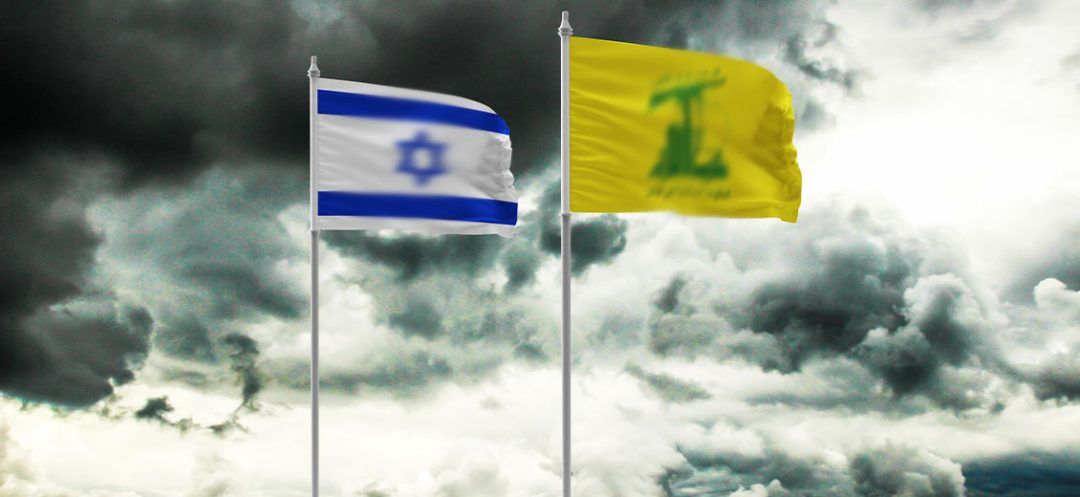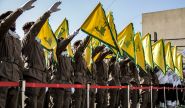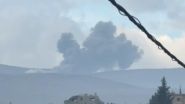
Since Monday, the Israeli military has significantly intensified its strikes across Lebanon, killing over a thousand Lebanese civilians in the process. A key objective of this campaign is to counter the main threat Hezbollah poses to Israel: its arsenal of rockets and precision-guided missiles.
This concern is echoed by the Israeli government's efforts to justify its bombings, as shown in a video it claims proves that Hezbollah stores missiles in residential areas in southern Lebanon and the Beqaa region.
In fact, the pro-Iranian group uses these projectiles to carry out daily bombings in northern Israel, mainly employing short-range weapon systems. However, the recent escalation is drawing greater attention to the group’s long-range rockets.
In his speech delivered on Friday at the UN, Israeli Prime Minister Benjamin Netanyahu claimed that since October 8, Hezbollah has fired at least 8,000 projectiles at Israel. This represents less than one-twelfth of its arsenal, which is estimated to exceed 130,000 munitions, according to the American think tank Center for Strategic and International Studies (CSIS).
Short-Range Rockets: The Ground Arsenal
The overwhelming majority of these munitions are short-range, with a range of 8 to 40 kilometers. According to CSIS, Hezbollah currently has approximately 100,000 of these rockets, which are typically classified as an essential component of artillery.
As for very short-range projectiles (8 to 10 kilometers), these can function at a tactical level, supporting infantry units, as evidenced during the battle of Al-Qusayr in 2013.
Since October 8, the pro-Iranian group has been using these weapons to bombard Israeli border towns that are unreachable by direct fire—specifically, targets within the line of sight of its fighters. In such cases, the group prioritizes the use of anti-tank missiles, particularly against Israeli army bunkers and armored vehicles.
The primary models used are manufactured in China and Iran, including the Fajr-1 and especially the Falaq-1. According to accusations from Tel Aviv, Hezbollah used this ammunition to strike the town of Majdal Shams, located in the Golan Heights annexed by Israel.
The size and explosive power of these munitions vary significantly, with warheads weighing between 19 and 384 kg, depending on the model. This factor affects their deployment, with smaller rockets being operable by foot soldiers while larger ones require vehicle-based launch systems.
To penetrate deeper into the Israeli border area, the pro-Iranian group employs a type of projectile that is widely used worldwide: Katyusha rockets. Originally developed in the Soviet Union, these rockets have a range of 4 to 40 km and warheads weighing between 10 and 20 kg.
Their low precision is offset by their quantity, as these rockets are typically fired in salvos to saturate a specific area, launched from vehicles equipped with multiple projectile launchers. When launched in large numbers, they can overwhelm Israeli missile defense systems, such as the renowned Iron Dome.
Medium Range: Striking Deep Into the North
Beyond the border, the main purpose of this arsenal is to strike at Israeli forces deep within their territory, especially military bases and other strategic targets in the northern region of the country. This task is carried out by projectiles with a range of 40 to 75 kilometers, which are also classified as rocket artillery.
The projectiles with the greatest range in this category can even target urban centers such as Haifa, including the Syrian-Iranian model Khaibar-1. The Fadi rockets, which were used to attack the Ramat David base and the facilities of the arms manufacturer Rafael System on Sunday, September 22, as well as the Glilot base on Tuesday morning (October 1), fall into this category.
These weapons have a range of 43 km to over 100 km and are equipped with warheads weighing between 445 and 170 kg of explosives. While they may appear less imposing than some rockets in the previous category, their strength lies in their improved accuracy.
Although they do not have a guidance system, their design is more sophisticated than most earlier models. These projectiles are usually launched from a vehicle fitted with a multiple-launch system.
Accuracy and Long Range: Tel Aviv’s Ultimate Concern
However, Hezbollah's real strength—and the Israeli army's greatest concern—lies in its long-range strike capability, which extends beyond 100 km. This category includes the fewest number of projectiles, ranging from several hundred to at most “a few” thousand.
Nevertheless, their limited quantity is counterbalanced by sophisticated guidance systems that can strike targets with an accuracy of less than 50 meters. For this reason, they are classified as precision missiles rather than mere rockets. Most of these are manufactured in Iran, aside from a few older Soviet models.
The weapons in this category at Hezbollah's disposal can reach distances of up to 550 km. This allows them to launch strikes from deep within Lebanese territory, such as the Beqaa Valley, while threatening all of Israel.
This capability offers a distinct advantage to the Iranian-backed group, as it complicates Israel's ability to detect the launches. Their stealth is further enhanced by the fact that these missiles can be fired from either a mobile platform that can be camouflaged or from silos. Depending on the model, these weapons feature warheads weighing between 450 and 600 kg, which allows them to inflict significant damage upon impact.
So far, Hezbollah has seemingly relied on these missiles with moderation. However, this situation is likely to change as the group continues its escalating conflict with the Israeli state.
Read more




Comments